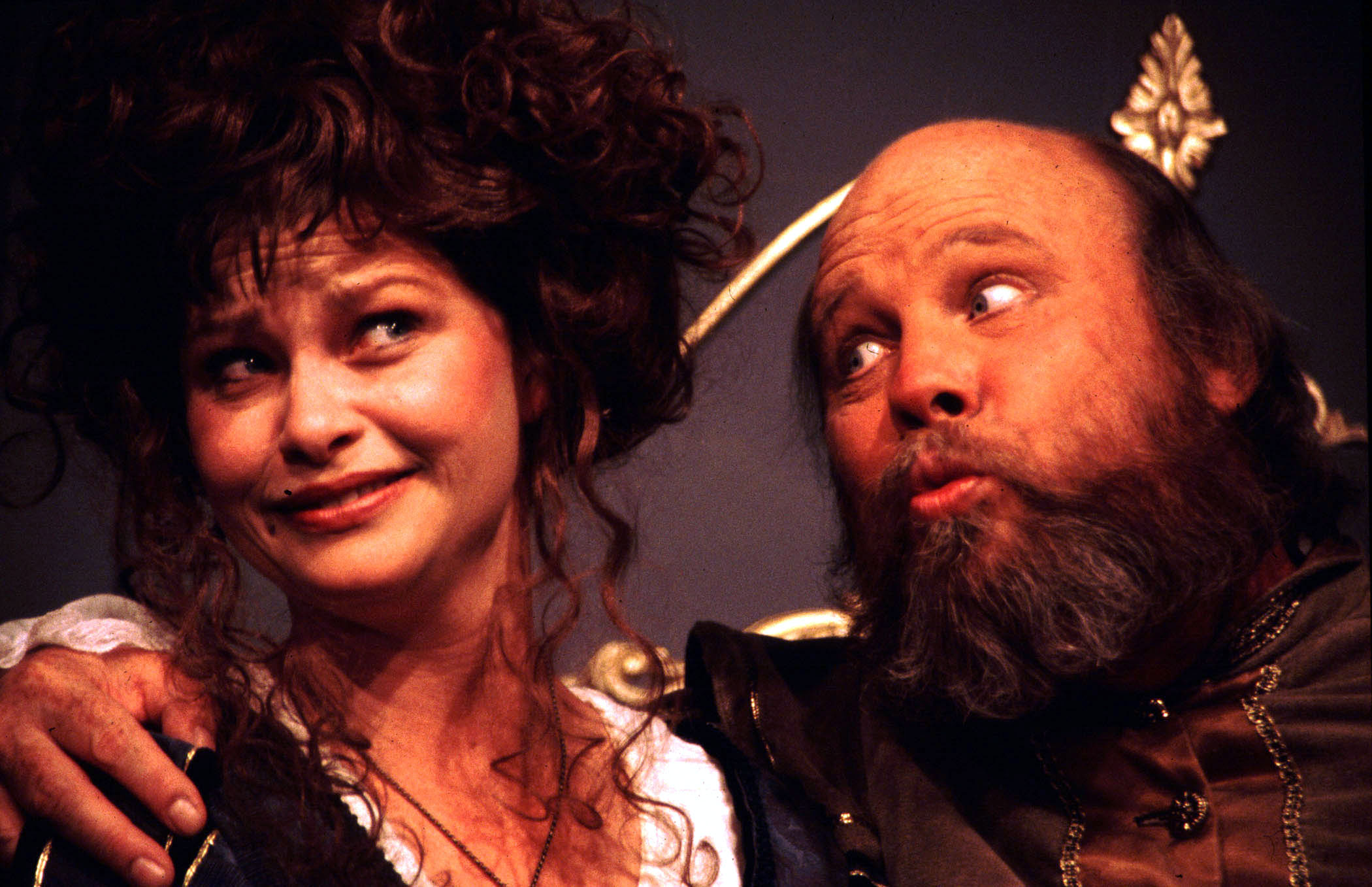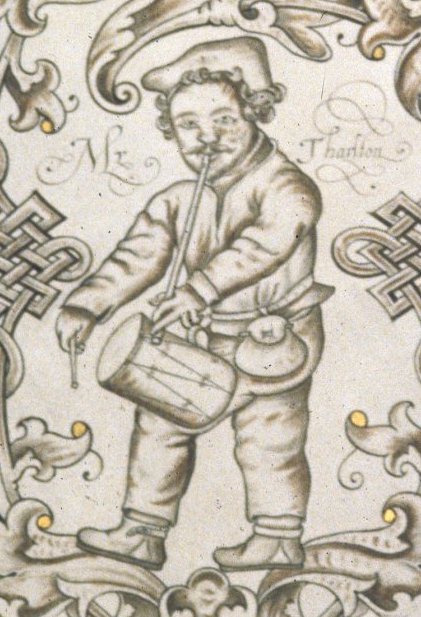|
The History Of Sir John Oldcastle
''Sir John Oldcastle'' is an Elizabethan play about John Oldcastle, a controversial 14th-/15th-century rebel and Lollard who was seen by some of Shakespeare's contemporaries as a proto-Protestant martyr. Publication The play was originally published anonymously in 1600 (Q1), printed by Valentine Simmes for the bookseller Thomas Pavier. In 1619, a new edition (Q2) carried an attribution to William Shakespeare. The diary of Philip Henslowe records that the play was written by Anthony Munday, Michael Drayton, Richard Hathwaye and Robert Wilson. (An entry in Henslowe's Diary records a later payment to Drayton for a second part to the play, which has not survived; because of this fact, the extant play has sometimes been called ''Sir John Oldcastle, Part I'' or ''1 Sir John Oldcastle''.) In 1664, the play was one of the seven dramas added to the second impression of the Shakespeare Third Folio by publisher Philip Chetwinde. Historical figure Like other subjects of Elizabethan his ... [...More Info...] [...Related Items...] OR: [Wikipedia] [Google] [Baidu] |
Folios And Quartos (Shakespeare)
The earliest texts of William Shakespeare's works were published during the 16th and 17th centuries in quarto or folio format. Folios are large, tall volumes; quartos are smaller, roughly half the size. The publications of the latter are usually abbreviated to Q1, Q2, etc., where the letter stands for "quarto" and the number for the first, second, or third edition published. Plays Eighteen of the 36 plays in the First Folio were printed in separate and individual editions prior to 1623. ''Pericles'' (1609) and ''The Two Noble Kinsmen'' (1634) also appeared separately before their inclusions in folio collections (the Shakespeare Third Folio and the second Beaumont and Fletcher folio, respectively). All of these were quarto editions, with two exceptions: ''The True Tragedy of Richard Duke of York'', the first edition of ''Henry VI, Part 3'', was printed in octavo form in 1595, as was the 1611 edition of ''The most lamentable tragedy of Titus Andronicus''. In chronological order, t ... [...More Info...] [...Related Items...] OR: [Wikipedia] [Google] [Baidu] |
Thomas Fuller
Thomas Fuller (baptised 19 June 1608 – 16 August 1661) was an English churchman and historian. He is now remembered for his writings, particularly his ''Worthies of England'', published in 1662, after his death. He was a prolific author, and one of the first English writers able to live by his pen (and his many patrons).Stephen, Leslie (1889). "Thomas Fuller". In ''Dictionary of National Biography''. 20. London. pp. 315-320. Early life Fuller was the eldest son of Thomas Fuller, rector of Aldwinkle St Peter's, Northamptonshire. He was born at his father's rectory and was baptised on 19 June 1608. Dr John Davenant, bishop of Salisbury, was his uncle and godfather. According to John Aubrey, Fuller was "a boy of pregnant wit". At thirteen he was admitted to Queens' College, Cambridge, then presided over by John Davenant. His cousin, Edward Davenant, was a tutor there. He did well academically; and in Lent 1624–1625 he became B.A. and in July 1628, at only 20 years of age, rece ... [...More Info...] [...Related Items...] OR: [Wikipedia] [Google] [Baidu] |
Richard James (scholar)
Richard James (1592 – December 1638) was an English scholar, poet, and the first librarian of the Cotton library. Early life Richard James was born in Newport, Isle of Wight, third son of Andrew James, by his wife Dorothy, daughter of Philip Poore of Durrington, Wiltshire. Thomas James was his uncle. Richard was educated at Newport Grammar School, and matriculated as a commoner at Exeter College, Oxford, on 6 May 1608. On 23 September that year he migrated to Corpus Christi College, of which he had been elected scholar, and graduated from there B.A. on 12 October 1611 and M.A. on 24 January 1615. On 30 September 1615 he was elected probationary fellow of his college, and on 7 July 1624 graduated B.D. Traveller After taking holy orders James set out on a long series of travels. Starting in Wales and Scotland, they extended to Shetland and Greenland. He went to Muscovy in 1618 as chaplain to Sir Dudley Digges. His notes about that journey (found in 1840s in Bodleian Library) inclu ... [...More Info...] [...Related Items...] OR: [Wikipedia] [Google] [Baidu] |
Sir John Falstaff
Sir John Falstaff is a fictional character who appears in three plays by William Shakespeare and is eulogised in a fourth. His significance as a fully developed character is primarily formed in the plays ''Henry IV, Part 1'' and '' Part 2'', where he is a companion to Prince Hal, the future King Henry V of England. Falstaff is also featured as the buffoonish suitor of two married women in ''The Merry Wives of Windsor''. Though primarily a comic figure, Falstaff embodies a depth common to Shakespeare's major characters. A fat, vain, and boastful knight, he spends most of his time drinking at the Boar's Head Inn with petty criminals, living on stolen or borrowed money. Falstaff leads the apparently wayward Prince Hal into trouble, and is ultimately repudiated after Hal becomes king. Falstaff has since appeared in other media, including operas by Giuseppe Verdi, Ralph Vaughan Williams, and Otto Nicolai, and in Orson Welles' 1966 film ''Chimes at Midnight''. The operas focus on his ... [...More Info...] [...Related Items...] OR: [Wikipedia] [Google] [Baidu] |
Henry V Of England
Henry V (16 September 1386 – 31 August 1422), also called Henry of Monmouth, was King of England and Lord of Ireland from 1413 until his death in 1422. Despite his relatively short reign, Henry's outstanding military successes in the Hundred Years' War against France made England one of the strongest military powers in Europe. Immortalised in Shakespeare's "Henriad" plays, Henry is known and celebrated as one of the greatest warrior-kings of medieval England. During the reign of his father Henry IV, Henry gained military experience fighting the Welsh during the revolt of Owain Glyndŵr and against the powerful aristocratic Percy family of Northumberland at the Battle of Shrewsbury. Henry acquired an increased role in England's government due to the king's declining health, but disagreements between father and son led to political conflict between the two. After his father's death in 1413, Henry assumed control of the country and asserted the pending English claim t ... [...More Info...] [...Related Items...] OR: [Wikipedia] [Google] [Baidu] |
Henry IV Of England
Henry IV ( April 1367 – 20 March 1413), also known as Henry Bolingbroke, was King of England from 1399 to 1413. He asserted the claim of his grandfather King Edward III, a maternal grandson of Philip IV of France, to the Kingdom of France. Henry was the first English ruler since the Norman Conquest, over three hundred years prior, whose mother tongue was English rather than French. Henry was the son of John of Gaunt, Duke of Lancaster, himself the son of Edward III. John of Gaunt was a power in England during the reign of Henry's cousin Richard II. Henry was involved in the revolt of the Lords Appellant against Richard in 1388, resulting in his exile. After John died in 1399, Richard blocked Henry's inheritance of his father's duchy. That year, Henry rallied a group of supporters, overthrew and imprisoned Richard II, and usurped the throne, actions that later would lead to what is termed the Wars of the Roses and a more stabilized monarchy. As king, Henry faced a ... [...More Info...] [...Related Items...] OR: [Wikipedia] [Google] [Baidu] |
Famous Victories Of Henry V
''The Famous Victories of Henry the fifth: Containing the Honourable Battel of Agin-court: As it was plaide by the Queenes Maiesties Players'', is an anonymous Elizabethan play, which is generally thought to be a source for Shakespeare's ''Henriad'' ('' Henry IV, Part 1'', '' Henry IV, Part 2'', and ''Henry V''). It was entered by printer Thomas Creede in the Stationers' Register in 1594, but the earliest known edition is from 1598.Campbell, Oscar James (ed), "Famous Victories" ''A Shakespeare Encyclopaedia'', Taylor and Francis, 1966, p.221. A second quarto was published in 1617. The play covers the riotous youth of Prince Henry and his transformation into a warrior king, ending with his victory at Agincourt and his wooing of Princess Katherine. The work is of unknown authorship, and various possible authors have been proposed, including a young Shakespeare, though this view is not widely accepted by scholars. Characters ;The English Court, Officials *Prince Henry, later King ... [...More Info...] [...Related Items...] OR: [Wikipedia] [Google] [Baidu] |
Foxe's Book Of Martyrs
The ''Actes and Monuments'' (full title: ''Actes and Monuments of these Latter and Perillous Days, Touching Matters of the Church''), popularly known as Foxe's Book of Martyrs, is a work of Protestant history and martyrology by Protestant English historian John Foxe, first published in 1563 by John Day. It includes a polemical account of the sufferings of Protestants under the Catholic Church, with particular emphasis on England and Scotland. The book was highly influential in those countries and helped shape lasting popular notions of Catholicism there. The book went through four editions in Foxe's lifetime and a number of later editions and abridgements, including some that specifically reduced the text to a ''Book of Martyrs''. Introduction The book was produced and illustrated with over sixty distinctive woodcut impressions and was to that time the largest publishing project ever undertaken in England. (Common descriptions in this paragraph and next: , , , , , ). Their pr ... [...More Info...] [...Related Items...] OR: [Wikipedia] [Google] [Baidu] |
John Foxe
John Foxe (1516/1517 – 18 April 1587), an English historian and martyrologist, was the author of '' Actes and Monuments'' (otherwise ''Foxe's Book of Martyrs''), telling of Christian martyrs throughout Western history, but particularly the sufferings of English Protestants and proto-Protestants from the 14th century and in the reign of Mary I. The book was widely owned and read by English Puritans and helped to mould British opinion on the Catholic Church for several centuries. Education Foxe was born in Boston, in Lincolnshire, England, of a middlingly prominent family and seems to have been an unusually studious and devout child. In about 1534, when he was about 16, he entered Brasenose College, Oxford, where he was the pupil of John Hawarden (or Harding), a fellow of the college. In 1535 Foxe was admitted to Magdalen College School, where he may either have been improving his Latin or acting as a junior instructor. He became a probationer fellow in July 1538 and a full f ... [...More Info...] [...Related Items...] OR: [Wikipedia] [Google] [Baidu] |
Tudor England
Tudor most commonly refers to: * House of Tudor, English royal house of Welsh origins ** Tudor period, a historical era in England coinciding with the rule of the Tudor dynasty Tudor may also refer to: Architecture * Tudor architecture, the final development of medieval architecture during the Tudor period (1485–1603) ** Tudor Revival architecture, or Mock Tudor, later emulation of Tudor architecture * Tudor House (other) People * Tudor (name) Other uses * Montres Tudor SA, a Swiss watchmaker owned by Rolex ** United SportsCar Championship, sponsored by the Tudor watch brand in 2014 * , a British submarine * Tudor, a fictional city, based on Elizabeth, New Jersey, seen in the video game Grand Theft Auto IV * Tudor, California, unincorporated community, United States * Tudor, Mombasa, Kenya * ''The Tudors'', a TV series * Tudor domain, in molecular biology * Tudor rose, the traditional floral heraldic emblem of England * Avro Tudor, a type of aeroplane * Tudor, a nam ... [...More Info...] [...Related Items...] OR: [Wikipedia] [Google] [Baidu] |



.jpg)



